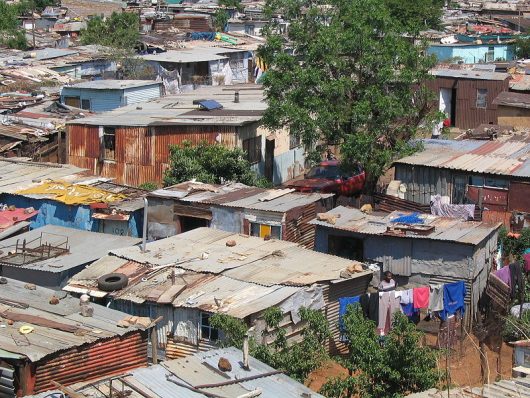Cold War Third World Definition

What is the definition of a third world country? In many countries, when people hear the phrase "third world country", visions of impoverished countries struggling to meet basic human needs are the first to pop up. This might be true in today's society, but the original definition of a third world country referred to the nations that lacked an alliance with either the U.S. or the former Soviet Union during the Cold War.
In recent years, the term has come to define countries that have high poverty rates, economic instability and lack basic human necessities like access to water, shelter or food for its citizens. These countries are often underdeveloped, and in addition to widespread poverty, they also have high mortality rates.
Definition of a Third World Country Underlying Meaning
In terms of the "worlds" system, they are ranked from first world to third world. The first world refers to the countries that are more developed and industrialized societies; in other words, capitalist societies that aligned with the U.S. and NATO during the Cold War. This includes North America, Japan, Western Europe and Australia.
Second world countries refer to the countries that lean more toward a socialist society, and generally were allied with the Soviet Union during the Cold War. These countries include Russia, Poland, China and some Turk states.
Third world countries are all the other countries that did not pick a side. This includes most of Africa, Asia and Latin America. However, this definition includes countries that are economically stable, which does not fit the currently accepted definition of a third world country.
As a society, the term "third world country" refers to countries with high mortality rates, especially infant mortality rates. They also have an unstable and inconsistent economy. These are countries that contain massive amounts of poverty and in some cases have fewer natural resources than other nations throughout the world. These countries often have to rely on more industrialized countries to aid them and help stabilize their economy.
These countries usually lack economic stability because of the lack of a functioning class system. Usually, the country will have an upper class and a lower class. Without a middle class to fill the gap, there is almost no way for a person to escape poverty because there is no next step for them on the economic ladder. This also allows the wealthy to control all the money in the country. This is detrimental to the economy of the country, and both increases and helps to sustain the poverty running rampant throughout the country while allowing the upper class to keep their wealth to themselves.
These countries often accrue a copious amount of debt from foreign countries because of the constant aid they need from other countries to keep their economy afloat and provide some financial stability to the citizens of the country.
The definition of a third world country has evolved from the political meaning during the Cold War to the economic meaning of today. Today's meaning refers to countries that are in financial trouble and need help from other countries to keep their economy sustainable, at least for a short time.
– Simone Williams
Photo: Wikipedia
Cold War Third World Definition
Source: https://borgenproject.org/definition-of-a-third-world-country/